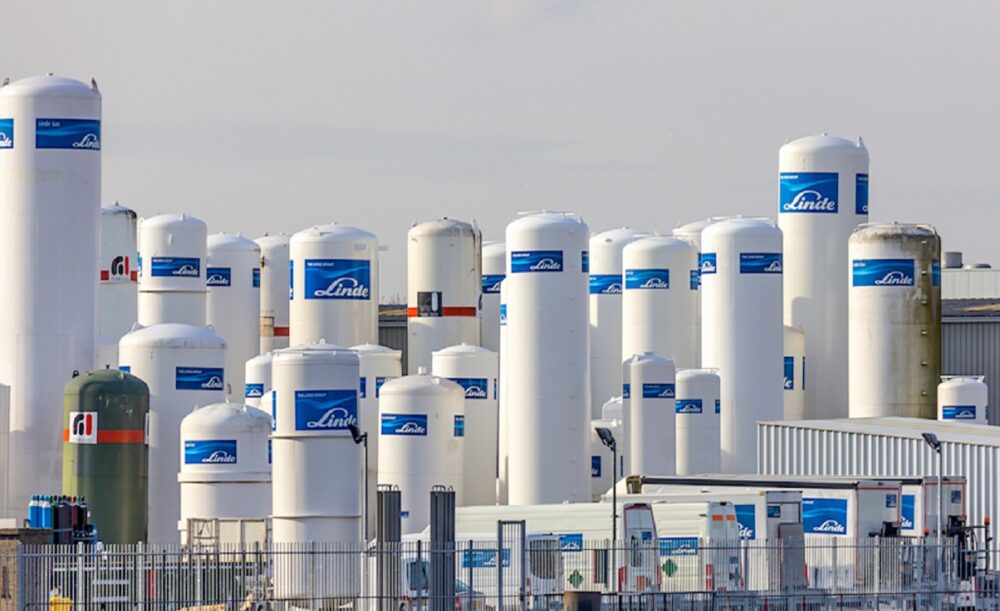As the most abundant element in our universe and the first one on the periodic table, hydrogen is really nothing new. So, why are so many countries calling it the key to our transition to clean energy? And if hydrogen is so abundant, why are we not already using it? The main issue with hydrogen is that it never exists by itself in nature. Energy expenditure is necessary to isolate it, and most of the time that energy comes from fossil fuels, so it has been hard to call hydrogen sustainable, until now.
The most popular way to isolate hydrogen is through a process called electrolysis: An electrolytic cell uses an electrical current, usually derived from some sort of fossil fuel, to separate hydrogen atoms from oxygen atoms in a water molecule. Basically, a fancy battery that runs electricity through water; then catches gaseous hydrogen and oxygen. But how does all of this relate to clean energy?
Two of the main issues with renewable energy are the inability to store it and the insufficiency of current energy grids to support excess energy production. If humans only needed energy when the sun is shining and the wind is blowing, there probably would not be any issues with reliability, but unfortunately, natural disasters, cloudy days, and no wind are all factors that have to be accounted for when talking about renewable energy. One could ask why we would have excess renewable energy when not a single country is running 100% on renewables.
Trying to catch the T during rush hour and standing alongside other people trying to squeeze into an already overflowing train is a similar experience to an electrical phenomenon called the “bottleneck effect.” Imagine the people trying to catch the train are electricity, and the T is an energy grid. This issue could be easily solved by the addition of a few more train cars, but in the same way, the MBTA doesn’t have more train cars to offer, many electrical grids simply don’t have the capacity to store the electricity referred to as “excess.”
What if we used excess renewable energy to power electrolysis when energy is abundant, and then stored it in hydrogen bonds until we need it again?
Luckily, this is where hydrogen comes in. Nothing about electrolysis is inherently unsustainable. The only issue is where to get the electricity to power this process. What if we used excess renewable energy to power electrolysis when energy is abundant, and then stored it in hydrogen bonds until we need it again? This approach is exactly what several countries in Europe, especially Germany, are calling Power-to-X.
Power-to-X takes advantage of surplus renewable energy to power the process that makes hydrogen. The hydrogen is then stored and considered the “power” to complete the “X.” Like in a mathematical equation, X is just a variable that could stand for electricity, fuel, heat, ammonia, chemicals, or anything that can be created by combining hydrogen with something else. To power this process, something called a hydrogen fuel cell is needed. A fuel cell is basically a battery, except that instead of needing chemicals like lithium and cadmium, the fuel cell produces energy by combining hydrogen with available oxygen from its surroundings, producing water as a “waste” product. Sound familiar? A fuel cell is basically the inverse of electrolysis; instead of breaking apart water to make hydrogen and oxygen, it combines hydrogen and oxygen to make water and harnesses the energy released by this reaction.
Another reason hydrogen could be so helpful in the clean energy transition is that it can be transported through preexisting gas pipes with very few modifications to them. In the U.S. especially, the vast natural gas infrastructure could be easily modified to transfer hydrogen. Given all this information, you might be wondering: Why we are not already doing this?
Unfortunately, hydrogen is still fairly expensive, and it can be explosive when stored as a gas and not handled properly. But for countries that have the infrastructure and money, and want to make the transition to clean energy, hydrogen power is certainly a step in the right direction.
